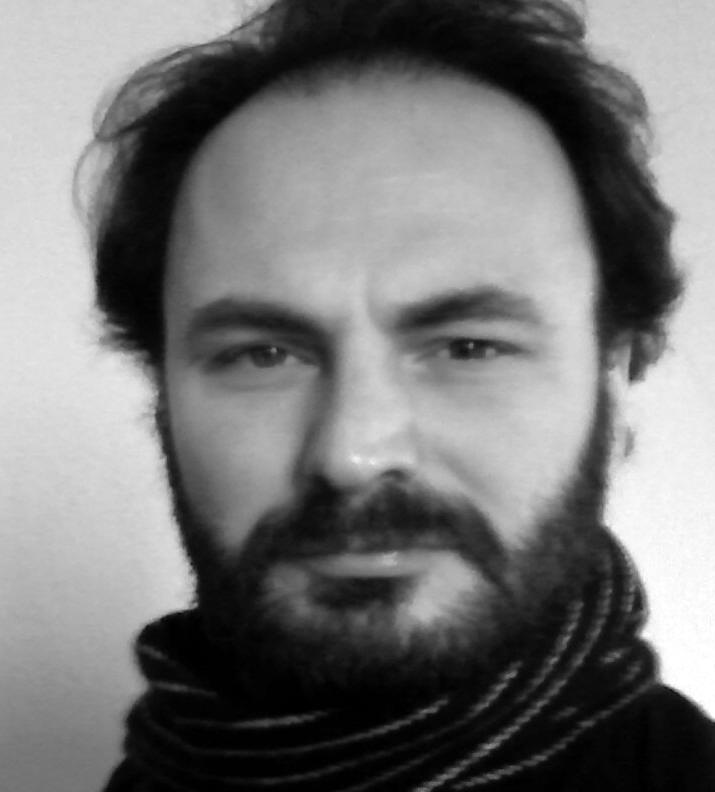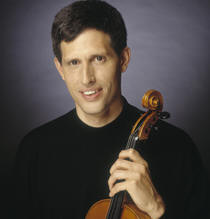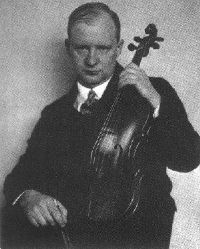|
Tickets:
$35 Preferred
seating
$20 - Regular
$15 - Seniors
$5 - Students
Please note that the tickets purchased less
than 2 weeks before the performances will be held at the box office at the date
of the performance.

by

|
|
  art of Strings art of Strings
• Fri., Jan. 18, 8 pm
-
Trinity On Main, New Britain
Stamitz: Sinfonia Concertante for Violin
& Viola,
Hindemith: Trauermusik for Viola and Strings,
Mozart: Violin Conc. in A, Michael McLean: Tangos
Steve Larson, viola, Adrian Sylveen, violin,
A long artistic relationship results in the program of concerti & duets.
More Info...

Violist Steve Larson is one of the most eloquent and passionate performers
of his generation. The Montreal Gazette has praised him for his "singing
tone, eloquent phrasing, expressive dynamics and flawless intonation," the
Boston Globe hailed a recent performance as "supercharged, clear-headed,
yet soulful," and Gramophone Magazine calls his playing "riveting."
Since 1994 he has been the violist of the Adaskin String Trio, considered
by many to be the pre-eminent ensemble of its kind in the world. In 2003,
they released a recording of the complete String Trios of Beethoven which
was enthusiastically welcomed by Gramophone Magazine: "Superb playing. .
.a flexible command of flow and phrase with instrumental power and
eloquence and a nutty tonal richness.…" In addition, he is also a member
of the Avery Ensemble, a group which performs an incredibly varied
repertoire-piano quartets and trios, duos in various combinations and
larger works with guests-covering a breadth of styles ranging from the
seventeenth century to the present day. Mr. Larson has given masterclasses
at numerous conservatories, universities and summer programs in both
Canada and the United States and is a regular guest performer at
International Viola Congresses. He has been on faculty at The Hartt School
of the University of Hartford since 1998.
In 1997 Steve Larson won second prize at the Lionel Tertis International
Viola Competition, UK, also receiving the special award for his
performance of the commissioned work. He has performed as a guest with the
Emerson, Miami, Penderecki, and Arthur Leblanc String Quartets and with
the Lions Gate and New World Trios. As a soloist he has performed in
Canada, the United States, France, Iceland, Italy, Austria, Japan, and
China. He is a former member of the Alcan String Quartet, Musica Camerata
Montréal and l’Ensemble Contemporain de Montréal. Mr. Larson is originally
from Saskatchewan (Canada) and holds degrees from McGill University,
l’Université de Montréal and The Hartt School. He studied violin with
Elman Lowe, Howard Leyton-Brown, and Mauricio Fuks, viola with Jutta
Puchhammer and Steve Tenenbom, and chamber music with members of the
Emerson and Orford String Quartets.
More...
About Composers:
Carl Philip
Stamitz is the best-known representative of the second generation of
composers who were active at the court of the Elector Palatine in Mannheim
during the middle decades of the Eighteenth Century. He received his
earliest musical training from his father, Johann Stamitz, Director of
Instrumental Music and leader of the incomparable Mannheim court
orchestra, and in the years following his father's early death, from the
court musicians Christian Cannabich, Ignaz Holzbauer and Franz Xaver
Richter.
Stamitz left Mannheim in 1770, traveling to Paris where, the following
year, he was appointed court composer to Duke Louis of Noailles. His
journeys as a virtuoso took him to Vienna in 1772, to Frankfurt the
following year and in 1774, to Augsburg, Vienna and Strasbourg.
Stamitz's departure from Paris has not been accurately documented although
the Pohl claimed that he was in London from 1777 until at least 1779.
After his departure, however, he never again held an important permanent
position even during the years of his greatest international fame. In
London he published many compositions, especially chamber works, and
continued to style himself 'Composer to the Duke of Noailles'. Some time
after 1779 he moved to The Hague where he appeared as a viola soloist in
at least 28 concerts at the Court of William V of Orange including one on
23 November 1783 in which Beethoven (aged twelve) played the fortepiano.
Stamitz's last years followed much the same pattern as the decade
immediately following his departure from Paris. He traveled extensively,
made occasional petitions for employment and sent his compositions as far
afield as Wales and Russia in the hope that they would win him lucrative
compensation. In the mid-1790s he served briefly as Kapellmeister and
music teacher at the university in Mannheim but the income was
insufficient for him to support his family. His wife of ten years, Maria
Josepha (nee Pilz) died in January 1801 and Stamitz himself died in
November the same year shortly before his planned trip to St Petersburg
received official sanction. In spite of his early fame, his obvious gifts
as a performer and composer and his sporadic experiments in alchemy, Carl
Stamitz died so heavily in debt that his possessions had to be auctioned
to help pay his creditors.

One of the most important composers of the first half of the 1900s,
Hindemith was also one of the most distinguished viola-players of his
time.He devoted the earlier part of his career to performance and he
travelled widely with the Amar-Hindemith Quartet as a viola soloist and as
a conductor of his own works. His name is particularly associated with the
concept of Gebrauchsmusik (workaday music) and the composer as a
craftsman.
He was a prolific composer and wrote music in a variety of forms. Attacked
by the National Socialists, who viewed him as a musical degenerate, he
resigned from the Berlin Musikhochschule, where he had served as professor
of composition for some eight years.
He moved to New York where he was appointed visiting professor at Yale
University in 1940. After the war he returned to Europe and spent the rest
of his life touring extensively, conducting for various orchestras,
teaching at the Universities of Yale and Zurich and composing his later
introspective compositions.
|
 |